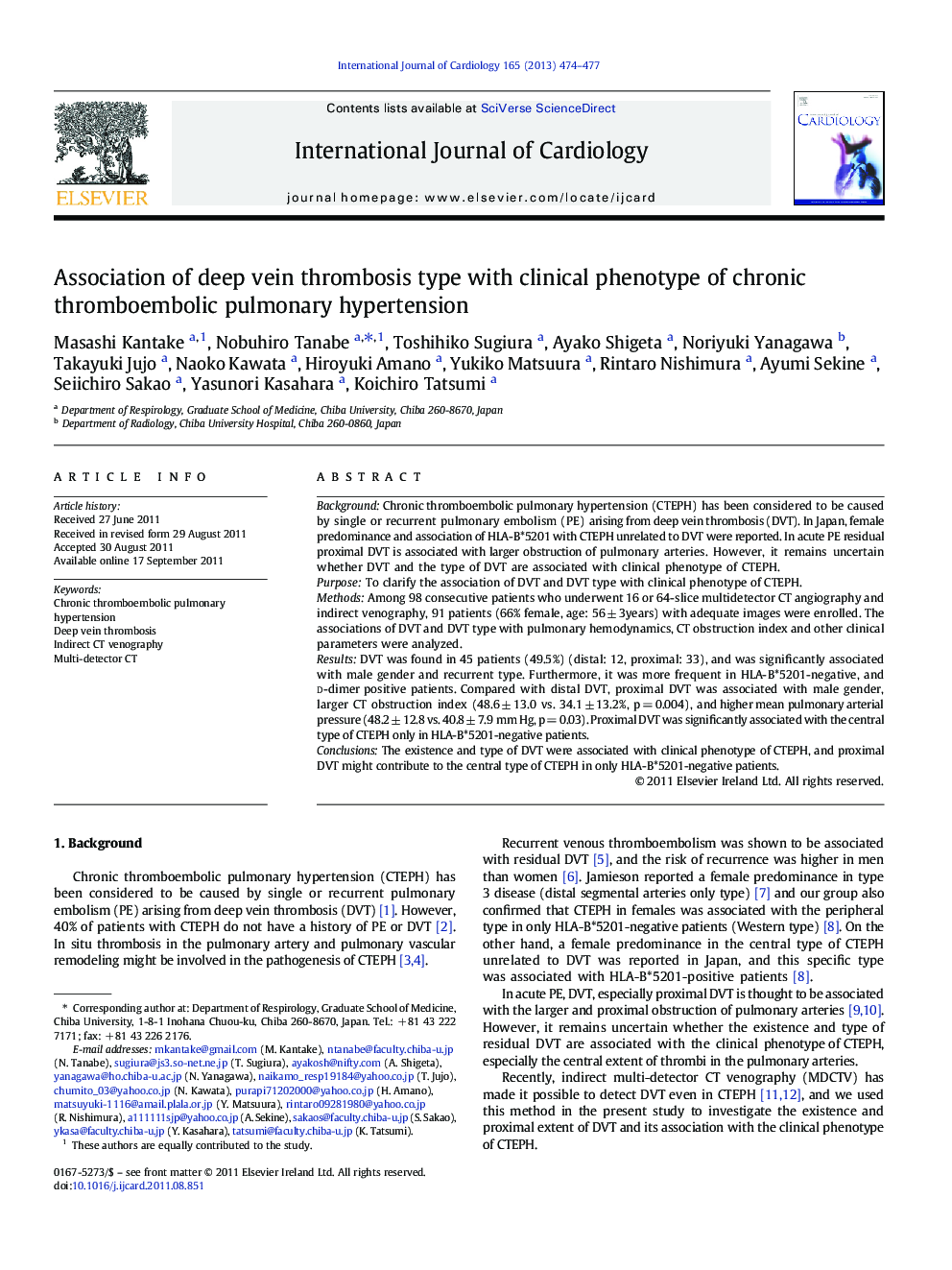| Article ID | Journal | Published Year | Pages | File Type |
|---|---|---|---|---|
| 5975957 | International Journal of Cardiology | 2013 | 4 Pages |
BackgroundChronic thromboembolic pulmonary hypertension (CTEPH) has been considered to be caused by single or recurrent pulmonary embolism (PE) arising from deep vein thrombosis (DVT). In Japan, female predominance and association of HLA-B*5201 with CTEPH unrelated to DVT were reported. In acute PE residual proximal DVT is associated with larger obstruction of pulmonary arteries. However, it remains uncertain whether DVT and the type of DVT are associated with clinical phenotype of CTEPH.PurposeTo clarify the association of DVT and DVT type with clinical phenotype of CTEPH.MethodsAmong 98 consecutive patients who underwent 16 or 64-slice multidetector CT angiography and indirect venography, 91 patients (66% female, age: 56 ± 3years) with adequate images were enrolled. The associations of DVT and DVT type with pulmonary hemodynamics, CT obstruction index and other clinical parameters were analyzed.ResultsDVT was found in 45 patients (49.5%) (distal: 12, proximal: 33), and was significantly associated with male gender and recurrent type. Furthermore, it was more frequent in HLA-B*5201-negative, and d-dimer positive patients. Compared with distal DVT, proximal DVT was associated with male gender, larger CT obstruction index (48.6 ± 13.0 vs. 34.1 ± 13.2%, p = 0.004), and higher mean pulmonary arterial pressure (48.2 ± 12.8 vs. 40.8 ± 7.9 mm Hg, p = 0.03). Proximal DVT was significantly associated with the central type of CTEPH only in HLA-B*5201-negative patients.ConclusionsThe existence and type of DVT were associated with clinical phenotype of CTEPH, and proximal DVT might contribute to the central type of CTEPH in only HLA-B*5201-negative patients.
